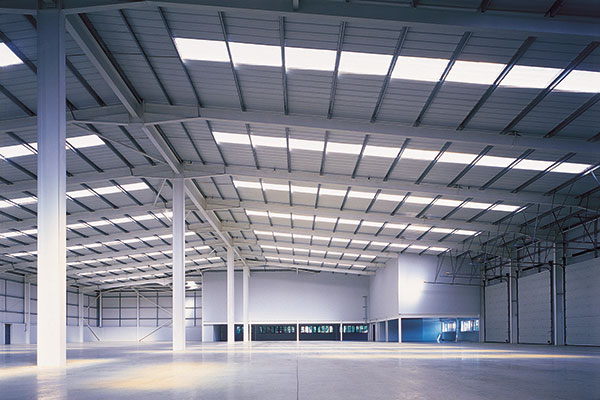The CHIPS Act is helping companies build manufacturing facilities, but there have been challenges. Some found solutions through outsourcing.

By Ed Marcil, President, Manufacturing & Distribution at ABM
Semiconductors play an ever-increasing role in our everyday lives — serving as the building blocks of a wide range of products from computers, mobile devices, appliances, and cars to personal care items. In fact, McKinsey predicts megatrends such as remote working, AI, and electric vehicles will push the semiconductor industry to becoming a $1 trillion dollar industry by the end of the decade. Yet, one of the major qualifiers for this growth will be a stable global supply.
The COVID-19 pandemic revealed vulnerability in the U.S.’s offshore dependence in semiconductor manufacturing. Chip shortages led to bottlenecks in the production of everything from automobile, consumer electronics, and appliances. As calls for more domestic semiconductor production intensified, Congress passed the CHIPS Act to provide federal subsidies of $52.7 billion along with tax credits to increase domestic production and create jobs.
Several semiconductor companies have begun constructing new U.S.-based fabs. Some are encountering obstacles.
Designing and building a semiconductor fab is an extremely intricate project — built to exacting standards and taking years to complete. After all, chip production is among the most precise type of manufacturing.
The site prep phase alone is a massive undertaking. According to Intel, a single factory requires more than 1 million cubic meters of soil and rock to be removed (the equivalent of 400 Olympic-size swimming pools). Plus, 600,000 cubic meters of concrete needs to be poured, along with 75,000 tons of steel reinforcement.
Fabs are multi-story buildings with each level performing a unique function. The clean room level requires a robust design that maintains strict cleanliness standards while allowing easy movement and workflow. Beneath cleanrooms are multi-story basement sub-fabs with sophisticated chemical management systems. These facilities require gas abatement, exhaust pumps, water chillers, and water purification. Wastewater can contain a variety of dangerous contaminants, including hydrofluoric acid, silicon particles, and organic carbon residues. Each of these contaminants requires a different process for removal.
The electrical system can also be complicated since most fabs require redundancy and may also require experience working with high voltages. Many commercial electricians are not required to work with higher voltages, typically working with AC power. Working on DC power requires a change in the insulation rating of the wiring needed, along with changes to the personal protective equipment (PPE) requirements for the job.
This level of construction complexity requires highly specialized skills and training, from site preparation to pipe fitters, plumbers, electricians, and welders all the way to equipment installation and calibration. Since there are planned fabs across the country, the need for skilled workers is hitting multiple regions. Union rules can also create additional complications if local tradespeople are required. Difficulties getting construction licenses and permits can also result in delays in fab construction.
Competition for these employees can be intense. People with specialized skills, such as tool calibration, are particularly scarce especially since few fabs have been constructed over the past two decades. General construction workers could undertake constructing clean rooms and calibrating tools but face a steep learning curve. The reality is many construction project managers are unfamiliar with the complex regulations and other special considerations related to fab construction.
Embracing outsourcing may be the answer to expand the labor pipeline as demand for skilled labor outpaces supply. This is particularly true if the outsourcing partner has in-depth expertise working on site at a semiconductor fab job site along with a flexible team of highly trained professional workforce to fill in any labor gaps. It is important that local teams are available with knowledge of regional restrictions, permitting processes and union guidelines.
Semiconductor device fabrication involves numerous types of wafer fabrication equipment, assembly equipment, and testing equipment. Most fabs are filled with hundreds of some of the most high-tech and capital-intensive manufacturing equipment. These tools need to be installed in the fab in specific positions in the line and interconnected by automated material handling to produce a completed wafer.
Organizing the team and materials to install a tool or cluster of tools in proper sequence requires a complicated, interdependent project plan – particularly when installations are performed in a clean room environment. The people who install the equipment know it better than anyone. So, this team is often the best qualified to streamline production, create maintenance schedules and processes, and improve workplace safety.
Once the fab is up and running, safeguarding operations becomes a priority while also optimizing productivity. A single dust particle or the slightest increase in temperature can result in the failure of an intricate semiconductor device.
Clean rooms require great care and cleanliness to create contamination-free, particle-free environments. Most chipmakers have ISO class 1 cleanrooms that are zero dust, meaning there are no more than 10 particles between 100 nanometers (nm) and 200nm per cubic meter of air. In comparison, a clean, modern hospital has about 10,000 dust particles per cubic meter. Temperature and humidity levels must also be kept tightly controlled.
Contaminations in the cleanroom can arise from personnel, equipment, or the surrounding environment. As a result, cleanroom operations need to employ and adhere to stringent processes to protect yield, drive efficiencies, and meet compliance. An expert in this non-traditional work environment can provide:
Getting access to skilled workers is a common cause of setbacks when building and running these complex facilities. Outsourcing to experts in construction management, equipment, and tool installation and maintenance, and other critical facility services may hold the key to domestic semiconductor manufacturing.

Ed Marcil is President of ABM’s Manufacturing and Distribution business, where he leads teams that deliver service excellence in material handling, production staffing, janitorial, transportation, maintenance, sustainability, energy, other services across the United States.
Scott Ellyson, CEO of East West Manufacturing, brings decades of global manufacturing and supply chain leadership to the conversation. In this episode, he shares practical insights on scaling operations, navigating complexity, and building resilient manufacturing networks in an increasingly connected world.